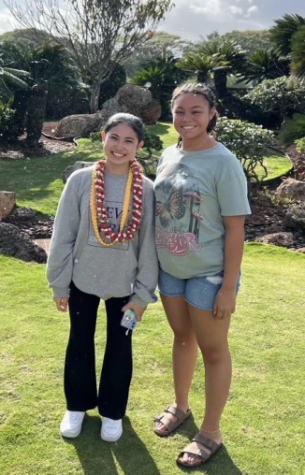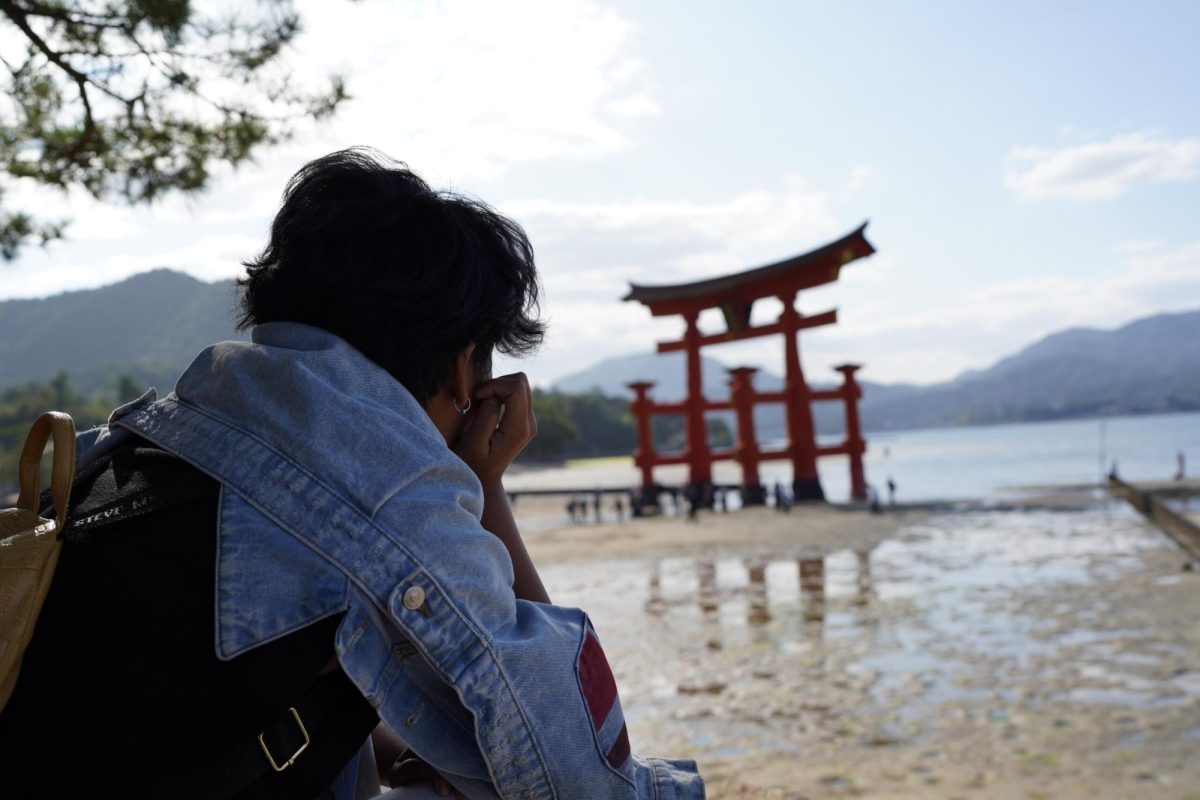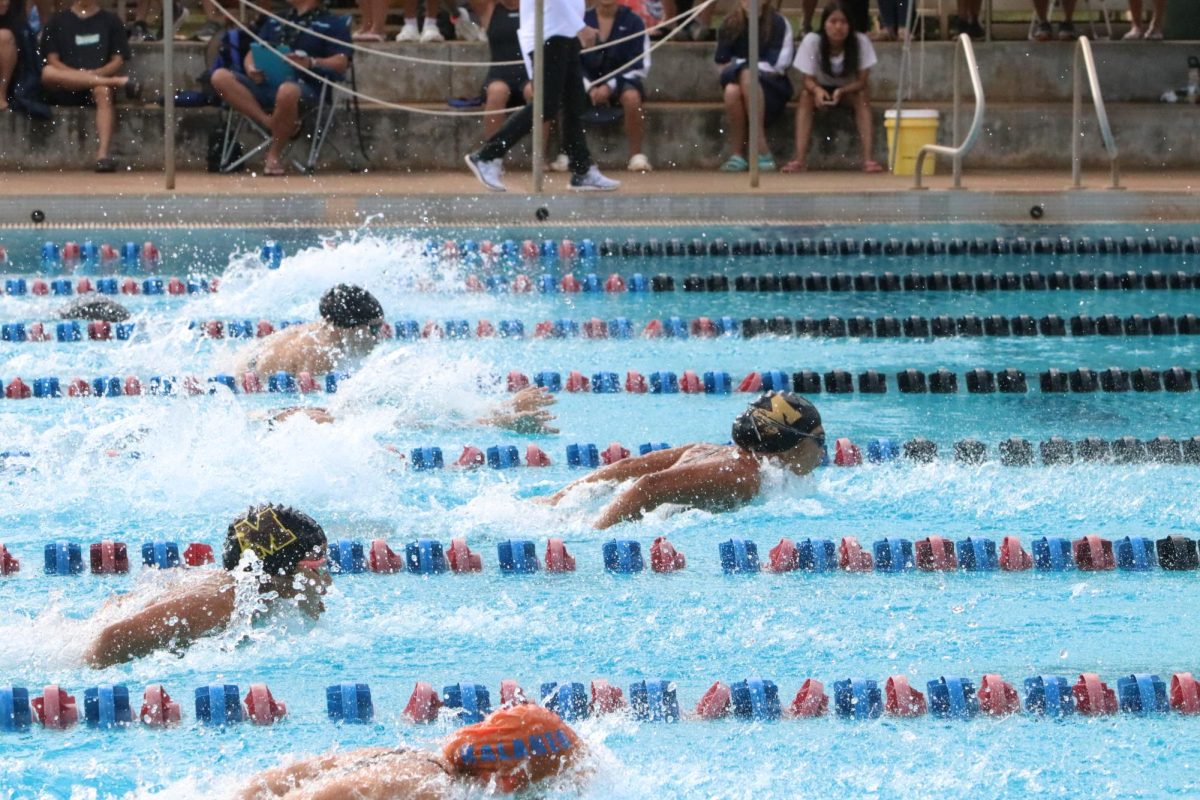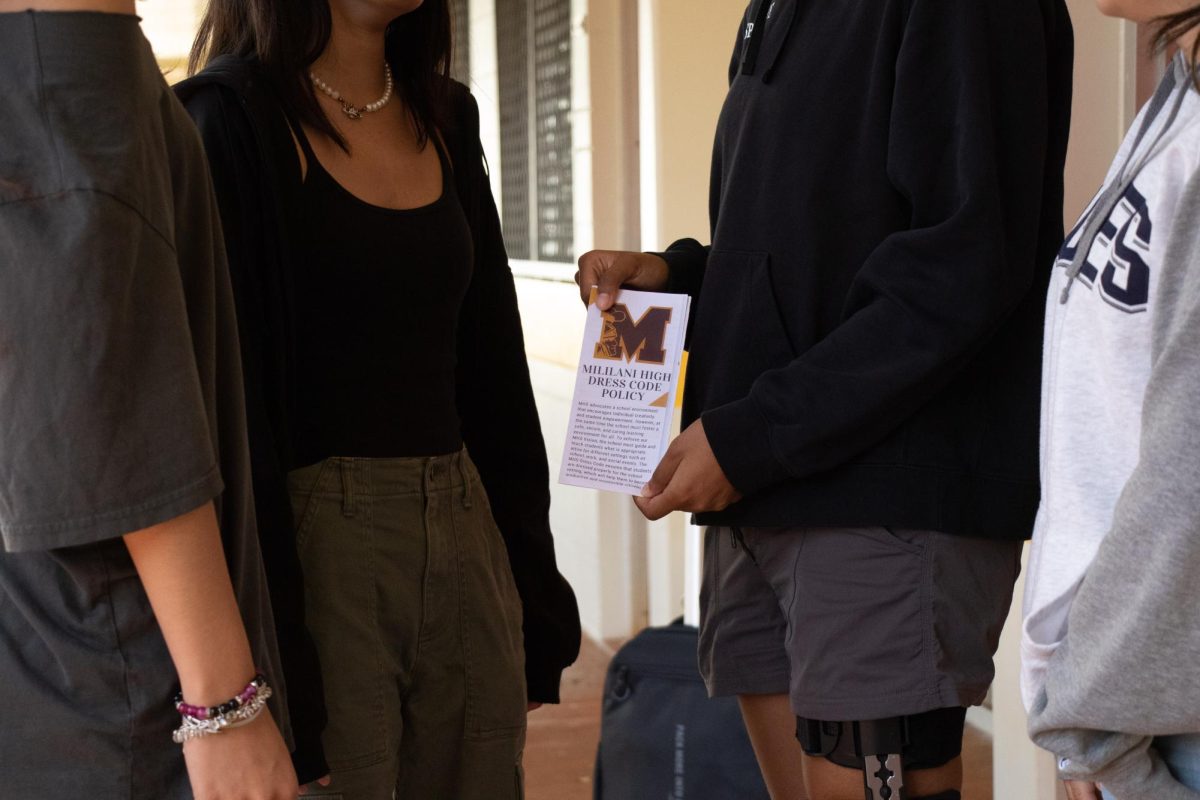Island Connections:
Hawaii-Okinawa Exchange Program
March 19, 2023
Due to COVID-19 issues in 2020 and 2021, international travel had been stalled, which in turn paused student exchange programs across the US. For three years, students from Japan were not able to come and enjoy the student exchange experience in Hawaii and vice versa — that is, until now. Collaborating with the Okinawan government, the non-profit organization Hawaii United Okinawa Association (HUOA) opened doors for Japanese exchange students on Feb. 12, 2023 to live with host families in Hawaii, as well as to learn more about the culture in Hawaii.
“If you have the chance to do something like the exchange program, it’s a nice opportunity to get to meet someone from somewhere else. And for this particular one, you get the chance to go to visit another country. Hopefully, there’s many more of these opportunities in the future,” said Japanese teacher Corey Zukeran.
The Hawaii-Okinawa High School Student Exchange Program was first established in 1990 by the State Legislature, the Department of Education and HUOA. Since then, high school students from Okinawa have been given the chance to learn in Hawaii, while students who host these students have been given the opportunity to visit Okinawa during the summer. This year, from Miyako High School in Okinawa Prefecture, fifteen students were paired with different host families across Oahu. One exchange student, junior Hina Sugama, was paired with a student from Mililani High School, junior Jacinda Stager.
“In highschool, when you participate in the exchange program, there is a lot that you can experience before becoming an adult. I think that’s really important, in the aspect of having good experiences in your life,” said Sugama.

In terms of signing up for the exchange program, the application process in Okinawa is very competitive. Interviews must be set up for each applicant, background checks must be done and only a few are selected each year. As for housing an exchange student, the process is less rigorous. Students who are willing to share a home can obtain a form from a Japanese teacher at their school or contact the HUOA. Signatures from parents, a teacher, and the principal are required to turn in the application form, but there are no additional requirements needed to apply as a host.
“It’s been nice to be able to have someone come and stay with you and learn about what your family does. I think all the exchange kids that come get a different experience when they’re in different homes because depending on where you live or what your background is, it’s different for everybody,” said Stager.
During her two week stay, Sugama was able to experience firsthand a typical day in an American high school, which differs quite significantly to schools in Japan. Unlike in America, Japanese adolescents are not required to go to high school, though the majority still does. For those who choose to continue their education, an entrance exam is needed to be taken to attend high school. To add on, while American high schools end in the summer, Japanese high schools usually end during the month of March. Another major difference about high schools in Japan is the fact that most of these schools, both private and public, require students to wear uniforms. When Sugama first came to Mililani High School, she was surprised by how students were given the freedom to choose their own outfits when attending school.
“I think that student exchange programs are an opportunity to be able to interact with someone of another culture, another country. I think it helps to broaden the whole student’s horizon and to see different points of view,” said Zukeran. “Making this sort of connection is important, and a lot of times the exchange students remain in contact for many years so that’s nice too.”
Other than attending school, the exchange students on the island were able to enjoy excursions arranged by the HUOA. On one of these excursion days, the students went to a park in Kaneohe and the Polynesian Cultural Center to learn more about Hawaiian culture. When exploring the island, Sugama came to a realization of how similar Hawaii’s climate is to Okinawa’s. However, not only was the climate so similar, but the culture as well. Due to its history, Hawaii has become a hotpot of different cultures, with rich traditions and a diverse population. One of the most influential cultures that have shaped Hawaii is Japanese culture. Common food on the island include musubis, bentos and saimin; all with Japanese origins. It is also common in Hawaii to hold Japanese festivals called Obon during the summer.
“The first time in Hawaii, to go to this kind of school, to learn all these new things, to live with my host family, it’s become a good memory and a good experience,” said Sugama.
If you’re interested in the exchange program or want more information about HUOA, visit huoa.org or contact the organization at [email protected].



